How To: Install Traction Bars
Tools required:
1. drill
2. step drill or 5/8 drill bit
3. 15/16 wrench
4. 15/16 socket and ratchet
5. adjustable wrench
6. ramps or jack stands
7. under 30 minutes of your time for the install.
First off a picture of the traction bars and a hardware list:
1. 2 - adjustable traction bars with jam nuts
2. 2 - 4 1/2" x 5/8-11 grade 8 bolts (frame rail)
3. 2 - 3" x 5/8-11 grade 8 bolts (control arm)
4. 4 - standard flat washers
5. 8 - lock washers
6. 4 - aluminum tapered spacers
7. 4 - 5/8-11 nylock nuts
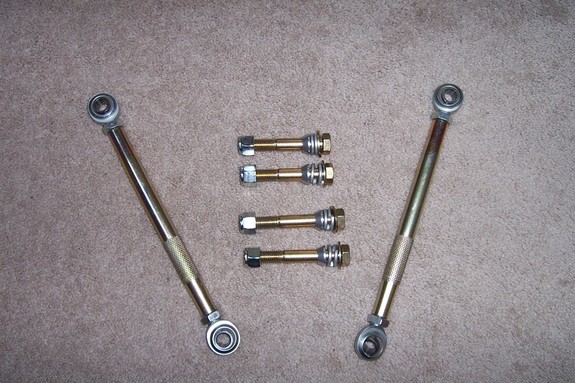
Locate the hole in the frame rail. The 4 1/2" x 5/8-11 bolt goes here.
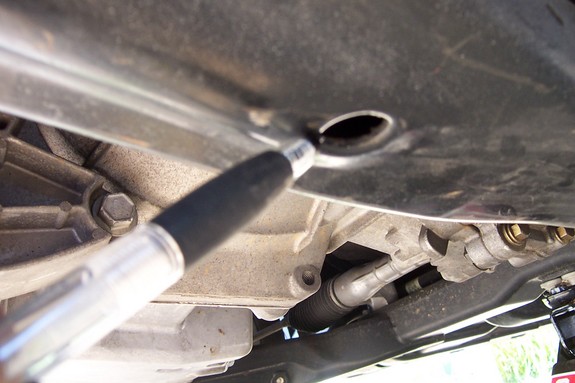
This picture shows where you must mark the lower control arm for drilling. Using a tape measure from the aluminum knub, measure inward 2 1/2 inches mark it then mark the center of the control arm.
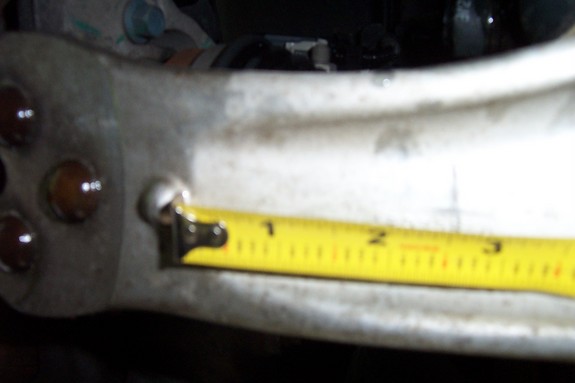
This picture shows what the control arm will look like after you have drilled the 5/8 hole in the control arm. Note: use a 1/4 drill bit as a pilot drill so the larger drill does not walk all over the place when drilling. When you are done drilling, clean all of the shavings off of the top of the control arm.
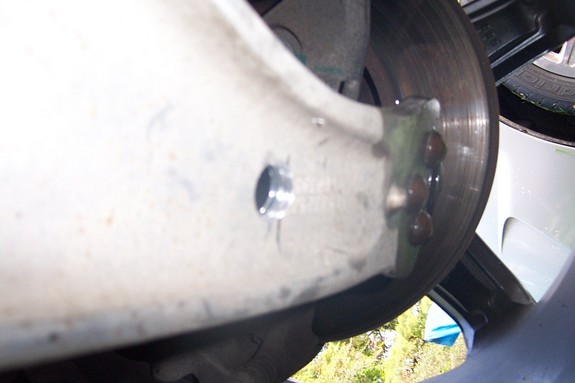
Next its time to bolt up the traction bars:
Hardware in this order from bottom to the top for the lower control arm: 3 1/2" long x 5/8-11 bolt, aluminum spacer, traction bar, aluminum spacer, 2 lock washers, lower control arm, flat washer, nylock nut.
Hardware in this order from bottom to the top for the frame rail:4 1/2" long x 5/8-11 bolt, traction bar, aluminum spacer, 2 lock washers, frame rail, flat washer, nylock nut.
This is what the bolt order should look like for the control arm:
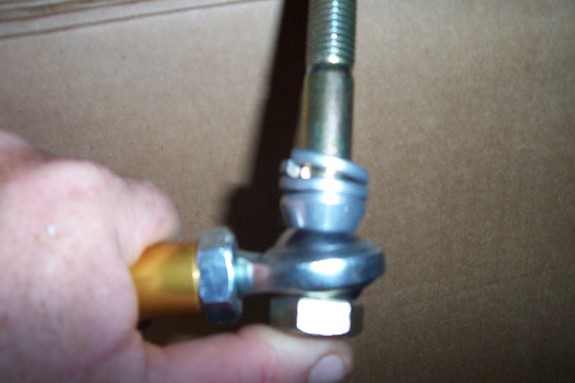
This is what the bolt order should look like for the frame:
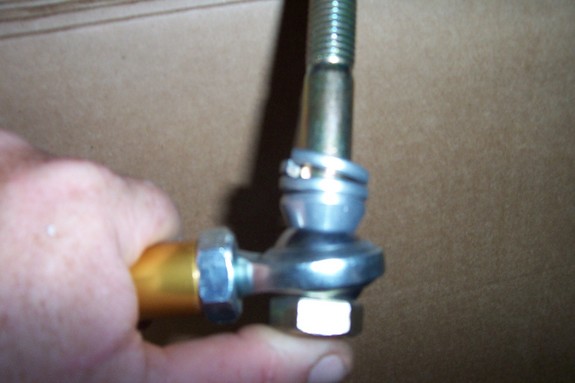
Before you tighten the 5/8 bolts, make sure the traction bars are loose and have plenty of play in them. Here is what it should look like installed:
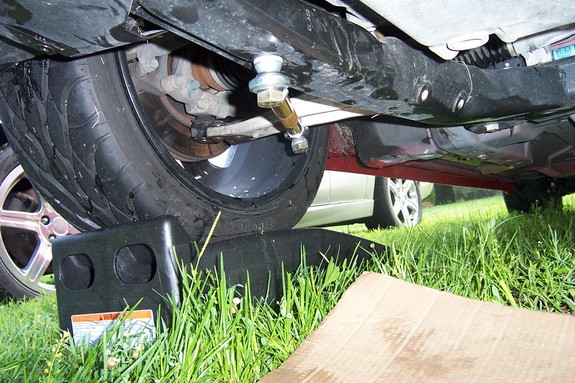
After installing, and periodically, lubricate the radial bearing with white lithium grease and work it in with a side to side twisting motion. Here is another picture of what it should look like, but showing the top of the frame rail also:
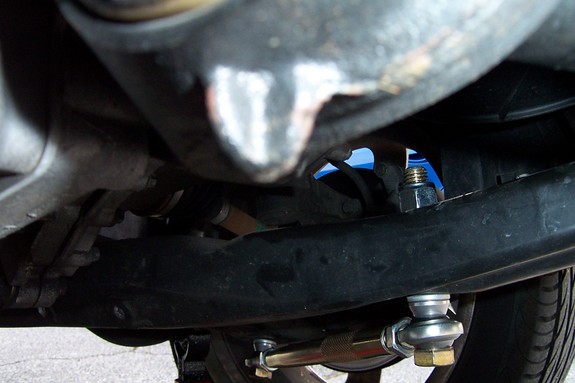
Next we move on to adjusting the traction bars. First you will need to lower the car back down and put the weight of the car back onto the front wheels. Start off by making sure the traction bars are loose when the weight of the car is on the front tires. Tighten the tubes draw them in the traction bars will get shorter. Tighten them by hand until they stop and you can't tighten anymore. Using an adjustable wrench tighten the traction bar 1/4 turn to pre load. Tighten the jam nuts and take for a test drive. If you have no wheel hop when you launch you are done. If you still have wheel hop tighten bars up 1/4 turn at a time until it is gone. Do not tighten more than 1 full turn. Make sure you look at the marks left by your tires. If there are no breaks in the tracks you have no wheel hop. If you still feel a little something, it is engine movement not wheel hop. You may have to buy either a torque brace or motor mount inserts to address that issue. It is so minimal, you should be able to tell the difference between the engine movement and wheel hop.








